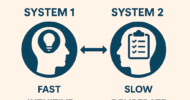I recently went to an infectious disease educational session sponsored by the Massachusetts Medical Society and the New England Journal of Medicine called “Epidemics Gone Viral.” The focus was preparedness for the next epidemic, which may come from anywhere. John Brownstein talked about how its arrival will be monitored and reported using Twitter and artificial intelligence.
With the meeting going viral with excitement as Bill Gates got on stage talking about technology and epidemic medicine, a thought popped in my head: What if the vector for the next epidemic is already at our fingertips — our mobile phones?
People touch their phones an average of ,2617 times a day, making it a perfect way for travelers to bring back all sorts of new infections by colonizing their screens and cases. What could be worse will be when sick people go to the hospital – both because they still use their phones, and their doctors do, too.
In different studies they have found:
Healthcare workers’ phones from the hospital have
- Detectable viral mRNA for influenza or other viral pathogens in 38%
- Bacterial colonization rates of 74 to 98%
- Potentially dangerous bacteria in 5 to 28%
- More common on smartphones (34.8%) than other cell phones (20.5%)
- 59% of medical students reported using smartphones in the bathroom: Only 32% had ever disinfected their cell phone
- Patient cell phones are colonized in 84% with 11% having risky bacteria and 100% resistant to penicillin.
So while we were tweeting the meeting with #epidemicsgoviral, likely doctors and researchers were sharing viruses, bacteria and other pathogens with each other at the table watching world experts on infectious disease warn us all about the coming plague. Jeremy Farrar of Wellcome Trust talked about how important intensive care professionals are in identifying and treating emerging epidemics. We have to make sure ICU staff, and other health professionals avoid letting our mobile technology contribute to spreading it.
Here are some possible considerations to lessen the risk of infection:
1. Keep it in your pants. Or pocket or purse. Don’t have your phone out while you’re seeing patients.
2. Keep them separated. Don’t use the same pockets for your stethoscope and your phone.
3. No news on the loo. Cell phones and toilets just don’t mix well. Checking email, Twitter or Facebook can wait.
4. Universal precautions before heading home. Apple brags that the iPhone is water resistant; alcohol wipes are no problem and may keep you from bringing infections home to your families.
5. Apply the rules to hospitalized patients. They are at the highest risk of exposure and becoming carriers that can spread to rehabilitation facilities or their homes.
6. Leave your phone outside when you visit. This rule is currently impractical to implement for all situations, but it should be a consideration for visitors and doctors for patients admitted for an infection or with some immunocompromise.
From what I can find, there are not different standards for cell phones. The only other writeup online was from the pre-smartphone era. I would love to hear what infectious disease experts recommend as best practices.
Keeping communications devices from spread communicable diseases seems like a good idea.
Matthew Katz is a radiation oncologist and chair, Committee on Communications, Massachusetts Medical Society. He blogs at ASCO Connection and Radiation Nation. He can be reached on Twitter @subatomicdoc.
Image credit: Shutterstock.com
































![Antimicrobial resistance: a public health crisis that needs your voice [PODCAST]](https://kevinmd.com/wp-content/uploads/Design-1-190x100.jpg)
![Rethinking medical education for a technology-driven era in health care [PODCAST]](https://kevinmd.com/wp-content/uploads/The-Podcast-by-KevinMD-WideScreen-3000-px-4-190x100.jpg)
